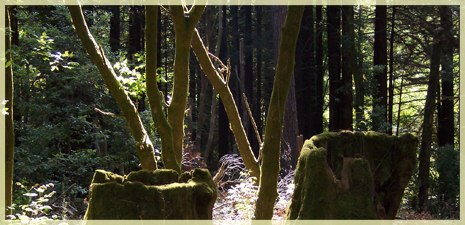
Pew Environment Group Statement on Obama Administration Roadless Forest Announcement
***
Washington, DC – 05/28/2009 – Jane Danowitz, director of the Pew Environment Group’s U.S. public lands program, today issued the following statement on the Obama administration’s announcement of a “time out” on new activity in undeveloped national forests protected by the 2001 Roadless Area Conservation Rule, including Alaska’s Tongass National Forest. Currently, the policy’s legal status is uncertain due to legal challenges and efforts by the Bush administration to replace it with a discretionary state petition process.
“Today’s action by the Obama administration recognizes the science on which the landmark roadless rule is based, the public who supported it in record numbers and future generations who will benefit from its protections.
“In the Senate and on the campaign trail, the President supported the roadless rule, one of the most significant land conservation measures in decades. We are pleased he will take this critical step to honor his pledge to protect America’s national forests and hope he will move quickly to fulfill it by taking swift action to reinstate the roadless rule.”
***
Here’s a breakdown of the rule:
The Roadless Area Conservation Rule was published in the Federal Register on January 12, 2001, as a discretionary rule to fundamentally change the Forest Service’s longstanding approach to management of roadless areas. The rule established blanket, nationwide prohibitions generally limiting timber harvest, road construction and reconstruction within inventoried roadless areas on 58.5 million acres of national forests and grasslands across the country. This popular rule (a result of an extensive public participation process including more than 600 public hearings and 1.6 million comments, 95 percent in favor of strong Roadless protection) is essential in protecting habitats, wildlife and water resources from the damages caused by development.
As demonstrated in the past when decisions regarding these lands were in the hands of local officials (and subject to pressures of commercial interests), rampant loss of wilderness occurred. In an effort to curb the mismanagement that resulted in the spoiling of almost 1 million roadless acres annually, the Roadless Area Conservation Rule was implemented to ensure local interests do not determine the fate of our remaining forests. Local decision makers do not necessarily take the nation-wide impacts into account, do not understand the loss of such lands on the local and national ecology, and, in most cases, do not have the expertise to manage these forest lands. In fact, the federal government created national forests as a means to stop the degradation and destruction of forests by local interests.
Prohibits new road construction and reconstruction in inventoried roadless areas on National Forest System lands, except:
• To protect health and safety in cases of an imminent threat of flood, fire, or other catastrophic event that, without intervention, would cause the loss of life or property.
• To conduct environmental clean up required by federal law.
• To allow for reserved or outstanding rights provided for by statute or treaty.
• To prevent irreparable resource damage by an existing road.
• To rectify existing hazardous road conditions.
• Where a road is part of a Federal Aid Highway project.
• Where a road is needed in conjunction with the continuation, extension, or renewal of a mineral lease on lands that are under lease, or for new leases issued immediately upon expiration of an existing lease.
Prohibits cutting, sale, and removal of timber in inventoried roadless areas, except:
• For the cutting, sale, or removal of generally small diameter trees which maintains or improves roadless characteristics and:
• To improve habitat for threatened, endangered, proposed, or sensitive species, or
• To maintain or restore ecosystem composition and structure, such as reducing the risk of uncharacteristic wildfire effects.
• When incidental to the accomplishment of a management activity not otherwise prohibited by this rule.
• For personal or administrative use.
• Where roadless characteristics have been substantially altered in a portion of an inventoried roadless area due to the construction of a classified road and subsequent timber harvest occurring after the area was designated an inventoried roadless area and prior to the publication date of this rule.
Applies immediately to the Tongass National Forest. Includes a transition provision that allows projects that have published a Notice of Availability for a draft environmental impact statement by the date of publication of the Final Rule to continue.
The Roadless Rule protects 58.5 million acres, or 31% of National Forest System (NFS) lands, about 2% of the total land base of the United States.
Approximately 386,000 miles of roads are currently administered on NFS lands. The Roadless Rule could prevent the construction of up to 232 miles of new road construction or reconstruction each year in inventoried roadless areas.


forest service
…
[…] The Roadless Area Conservation Rule was published in the Federal Register on January 12, 2001, as a discretionary rule to fundamentally change the Forest Service’s longstanding approach to management of roadless areas. … […]…